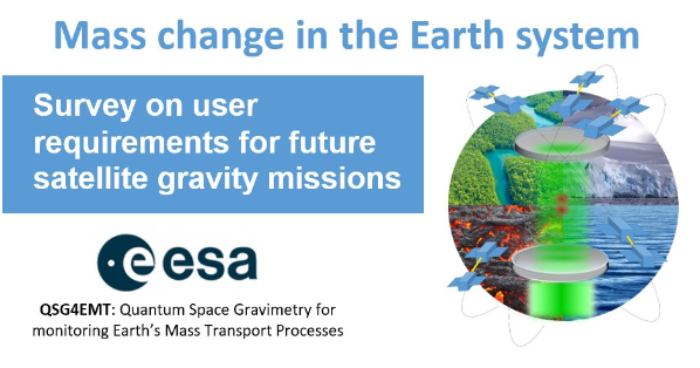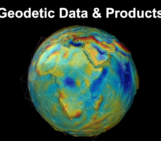
Are you interested in water storage, sea level, ice sheets, crust-mantle dynamics, or any other mass change signals? Please complete the following user requirement survey and help shape future satellite gravity missions
Mass changes on and below the Earth’s surface, such as from water storage variations to groundwater use, glacier melt, sea level change, and earthquakes, among many others, can be observed by satellite gravimetry.
Since 2002, the GRACE and GRACE-FO satellite gravity missions have been observing changes in the Earth’s gravity field that can be converted to mass changes with an accuracy of 2 cm water equivalent at a spatial resolution of about 300 km on monthly data. An enhanced spatial and temporal resolution compared to GRACE/-FO is promised for the new satellite mission called MAGIC, planned by ESA and NASA with an envisaged time frame from 2028 to 2038.
GRACE, GRACE-FO, MAGIC, … and then?
But what happens afterwards? In 15 years, gravity mission constellations will be based on multiple satellite pairs equipped with novel quantum sensor instrumentation providing even larger improvements in spatial and temporal resolution of mass change data, significantly expanding the potential range of applications.
How can you help?
A successful satellite mission requires careful planning over many years and now is the time to specify the goals for a quantum gravity field mission that could be launched in about 15 years. We are therefore interested to know what you as a user have for needs to future satellite missions. Thus, your input to the questions in the survey will help in defining the first scientific requirements matrix for such a mission. The survey is being carried out in the framework of the ESA-funded project QSG4EMT (Quantum Space Gravimetry for monitoring Earth’s Mass Transport Processes) and targets potential future satellite missions that will significantly enhance the retrieval of mass change signals in terms of spatial/temporal resolution and accuracy compared to currently available products.
Where? – https://www.soscisurvey.de/mass_change/
How long will it take? – About 15 minutes
Until when? – June 18
Feel free to share with your colleagues and contact us in case of any questions: qsg4emt@geod.uni-bonn.de
Thank you very much!


